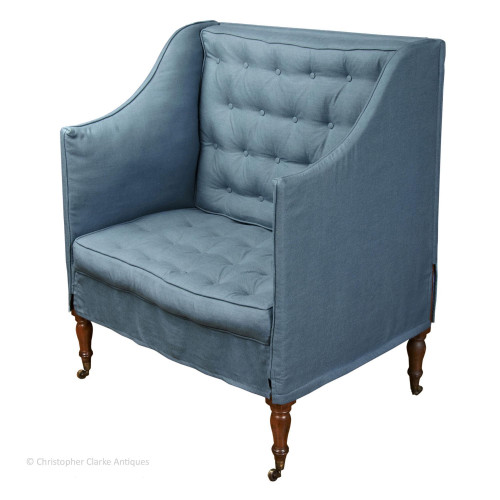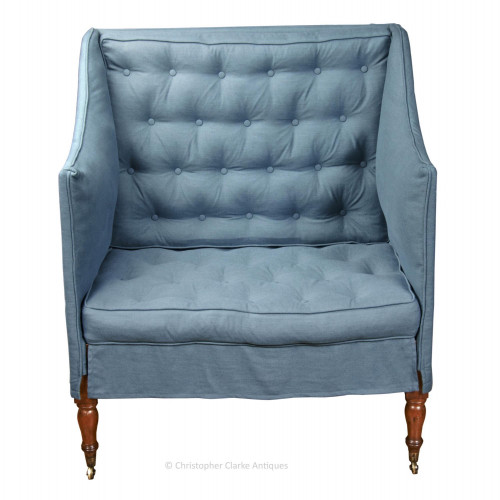Morgan & Sanders

1801 - 1820
Morgan & Sanders history and rivalry with their past employer Thomas Butler is well documented, and indeed their flyers clearly stated 'Morgan & Sanders Have no Connection whatever WITH ANY OTHER MANUFACTORY IN London' in a ribboned box.
Thomas Morgan was a linen-draper in Newport Street before he started work for Butler. Joseph Sanders also worked for Butler and the two of them joined forces to create the company of Morgan and Sanders in 1801. The two believed that Butler would sell his business to them when he retired. When he sold it to Thomas Oxenham, they took umbrage and set up in rivalry as Butler's neighbours at 16 & 17 Catherine Street.
Much of their work was similar to Butler and in fact they claimed that they were the originators of some of his designs. They had supplied Nelson and Emma Hamilton with furniture for their Merton home and were keen to capitalise on their association with Britain's naval hero, renaming their premises Trafalgar House. They also illustrated an Imperial Dining Table which they say they invented and patented, a fact that Gillows might dispute. Sofa and Chair Beds were also advertised, showing their use for both seating and sleeping. Many of the items are of course almost identical to those sold by Butler and those who subsequently took over his business.
A particular item of interest, that both Morgan & Sanders and Butler illustrated and used exactly the same wording to describe, were their Portable Chairs which they said
Morgan & Sanders history and rivalry with their past employer Thomas Butler is well documented, and indeed their flyers clearly stated 'Morgan & Sanders Have no Connection whatever WITH ANY OTHER MANUFACTORY IN London' in a ribboned box.
Thomas Morgan was a linen-draper in Newport Street before he started work for Butler. Joseph Sanders also worked for Butler and the two of them joined forces to create the company of Morgan and Sanders in 1801. The two believed that Butler would sell his business to them when he retired. When he sold it to Thomas Oxenham, they took umbrage and set up in rivalry as Butler's neighbours at 16 & 17 Catherine Street.
Much of their work was similar to Butler and in fact they claimed that they were the originators of some of his designs. They had supplied Nelson and Emma Hamilton with furniture for their Merton home and were keen to capitalise on their association with Britain's naval hero, renaming their premises Trafalgar House. They also illustrated an Imperial Dining Table which they say they invented and patented, a fact that Gillows might dispute. Sofa and Chair Beds were also advertised, showing their use for both seating and sleeping. Many of the items are of course almost identical to those sold by Butler and those who subsequently took over his business.
A particular item of interest, that both Morgan & Sanders and Butler illustrated and used exactly the same wording to describe, were their Portable Chairs which they said
were available 'Plain & with Arms, of Mahogany or elegantly Japan'd. made to any pattern, a dozen of which fit in the space of two common chairs'. The drawings that the 2 companies use show different models of chair but the folding mechanism seems to be that the front legs are removable and the rear of the seat is hinged to allow it to fold flat against the back. This is similar to the Bergere chairs which we have shown in the past. We have yet to see a dining chair working to these principles that could be attributed to one of the Catherine Street makers.
In 1818 Sanders died and the company changed their name to Morgan & Co. Two years later Thomas Morgan sold the company to John Durham, a foreman in the company.
Morgan & Sanders are an important name in the history of campaign furniture and probably better known than their former employer Thomas Butler. They also made domestic furniture and their metamorphic armchair that converts to library steps is a piece strongly associated with the company.
4 ITEMS







